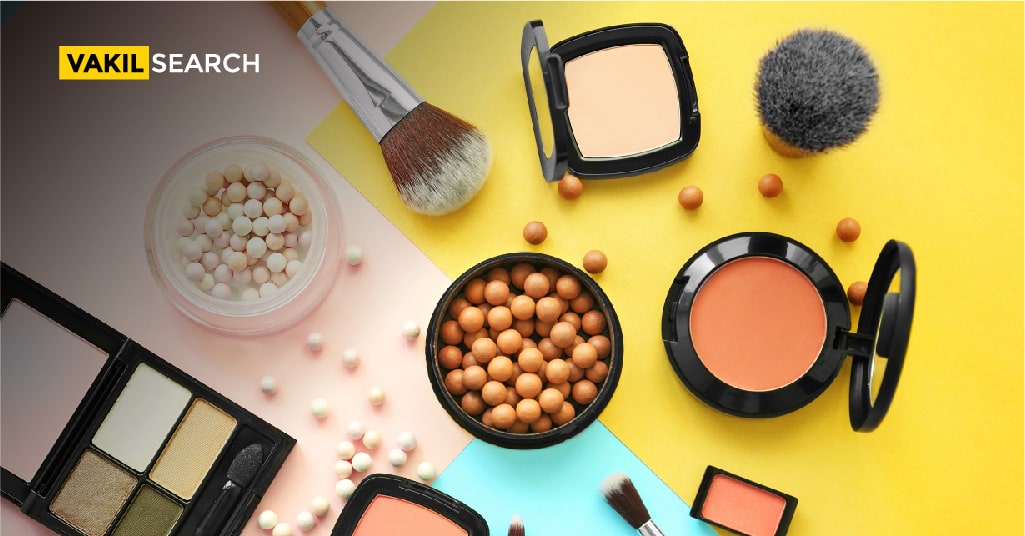There are 45 classes of trademarks. Each class has its own registration process. In this article, we will explore Class 3 Trademarks and understand what class is commonly used for trademarks.
Overview
The International (Nice) Classification of Goods and Services has categorized various services and items into 45 trademark classes, with 1 to 34 covering goods and 35 to 45 covering services. This classification is used by the Indian Trademark Registry as well to categorize trademarks.
Trademark Class 3 is one of 45 trademark classes used by the United States Patent and Trademark Office (USPTO) to categorize items or services.
Cleaning and cosmetics preparations, substances used in laundry and bleaching preparations, polish, abrasive and scouring preparations, soaps, dentifrices, perfumery, cosmetics, essential oils, and hair lotions are all included in Trademark Class 3.
Commonly Registered Goods in Class 3
- Deodorants for humans or animal use
- Room fragrance preparations
- Sanitary preparations under the category of toiletries.
Class 3 Not Used If You are Registering
- Chemical chimney cleaners
- Preparations used for degreasing in manufacturing processes
- Deodorants intended for purposes other than humans or animal use
- Sharpening stones and grindstones
Coordinated-Classes of Class 3 Trademarks
- Trademark Class 5: Pertaining to pharmaceutical products
- Trademark Class 21: Designated for household utensils
- Trademark Class 35: Covers services associated with advertisement and business
- Trademark Class 42: Aligned with services in the field of science and technology
- Trademark Class 44: Associated with services in the medical and veterinary domain
Trademark registration is built on a class system. A coordinated class is related to another class. The USPTO has mandated that while filing for a trademark under one class, the applicants need to file under the coordinated classes as well.
For each class of goods or services under which an applicant files, a separate registration fee must be paid. Moreover, the correct class should be indicated while applying for a trademark, because if the class is incorrectly mentioned then the application process starts all over again.
Acceptable Specimens for Class 3
If your trademark is being utilised in commerce, you must display a specimen of the mark in your application as it appears to your customers. A trademark specimen may be a tag or label of your goods or a display that is associated with your goods. It is tangible evidence of how you are employing your trademark in the marketplace with the goods or services listed in your application. Moreover, it is basically what customers see while deciding whether to buy the goods or services associated with your trademark.
The specimen must show the mark as it is used on or in connection with the goods in commerce. Even a copy or any other reproduction of the mark as it is used on or in connection with the goods is acceptable.
In most cases, a label is considered an acceptable specimen, as it is applied directly on the goods or the containers for the goods.
A specimen illustrating the use of the trademark on a vehicle in which the goods are being marketed to the relevant customers is also admissible if it is the typical mode of use of a mark, for that particular product.
A mailing or shipping label may also be accepted if proper usage is shown and if it is attached to the goods or on the container for the goods. However, it is not acceptable if the mark is merely a trading name and not a trademark: https://ipindia.gov.in/
List of Products Classified Under Trademark Class 3
Class 3 trademarks are primarily concerned with a wide range of cosmetic, beauty and cleaning preparations. The section that follows is exclusively dedicated to all those items and preparations under Class 3.
Toiletries |
|
Oral Hygiene Preparations |
|
Perfumery and Fragrances |
|
Makeup |
|
Soaps and Gels |
|
Bath Preparations |
|
Skin Care Preparations |
|
Hair Care Preparations and Treatments |
|
Hair Care Preparations and Treatments |
|
Animal Grooming Preparations |
|
Essential Oils and Aromatic Extracts |
|
Cleaning and Fragrance Preparations |
|
Vehicle Cleaning and Laundry Preparation |
|
Leather & Shoe Cleaning and Polishing Preparations |
|
Abraders |
|
Tailors’ and Cobblers’ wax |
|
How to Register a Trademark in Class 3?
To register a trademark in Class 3, which encompasses cleaning and toilet preparations like soaps, perfumes, and cosmetics, follow these steps:
Conduct a Thorough Trademark Search:
- Utilise online databases for trademark searches in India to ensure your desired mark is unique and does not conflict with existing ones.
File an Application with the Trademark Registrar:
- Submit your trademark registration application online or offline, providing essential details such as logo, name, address, class (Class 3), description, etc.
- Pay the prescribed fee for each class of goods or services associated with your mark.
Wait for Examination by the Trademark Officer:
- Your application undergoes examination by the Trademark Officer, who assesses its correctness and validity.
- The officer may accept, reject, or issue an examination report with objections or conditions.
Respond to the Examination Report:
- Address any concerns raised in the examination report within the specified time limit to prevent the abandonment of your application.
Advertisement in the Trademark Journal:
- If your application is accepted, it is advertised in the Trademark Journal, serving as public notice of your claim to the mark.
- Third parties have four months to oppose your registration; if no opposition arises or is resolved in your favour, the mark proceeds to registration.
Receipt of Certificate of Registration:
- Once registered, you receive a certificate from the Trademark Registrar.
- Display the ® symbol next to your mark, indicating your exclusive rights.
Renewal of Registration:
- Maintain your rights by renewing your registration every 10 years.
What Are the Benefits of Registering a Trademark in Class 3?
Securing a trademark in Class 3 offers a myriad of advantages:
- Legal Protection: By registering your trademark in Class 3, you gain legal protection against unauthorised use or infringement. This ensures that your brand identity remains exclusively associated with your products within the specified class.
- Enhanced Brand Recognition: A registered trademark aids in building and solidifying brand recognition. Consumers are more likely to trust and choose products that bear a registered trademark, fostering a positive association with your brand.
- Value Addition: A registered trademark in Class 3 adds substantial value to your business. This not only safeguards your intellectual property but also enhances your company’s overall worth. Investors, partners, and potential buyers are more inclined to engage with businesses that have secured trademarks, reflecting a commitment to brand integrity.
- Marketplace Distinction: Registration in Class 3 establishes a clear distinction for your products in the marketplace. It helps in setting your offerings apart from competitors, contributing to a stronger market presence and customer loyalty.
- Licensing Opportunities: Owning a trademark in Class 3 opens doors to licensing opportunities. Other businesses may seek permission to use your brand in association with complementary products, creating additional revenue streams for your enterprise.
The Importance of Choosing the Right Trademark Classes
Selecting the appropriate trademark classes holds paramount significance in safeguarding your brand and preventing legal conflicts. Trademark classes serve as delineations for the goods and services under which your trademark is registered, delineating the extent of your rights. Precise classification is crucial to avert confusion with similar trademarks in different classes.
For instance, registering ‘Apple’ under class 9 shields it in the realm of computers and software, avoiding conflict with the ‘Apple’ trademark registered under class 31, covering fresh fruits and vegetables. However, a misstep, such as registering ‘Apple’ under class 35 for advertising and business management, may invite opposition from another ‘Apple’ trademark owner in the same class.
Choosing the right trademark classes necessitates a thorough understanding of your goods and services, contemplating both present and future business trajectories. A misalignment may result in wasted resources, legal entanglements, and potential challenges. To navigate this intricacy, seeking counsel from a professional trademark attorney is indispensable. Their expertise ensures a strategic approach to your trademark registration, minimising risks and optimising protection for your brand. In essence, the right trademark classes are not just a bureaucratic formality but a pivotal strategy for securing the integrity and longevity of your brand identity.
Vakilsearch offer’s world-class trademark registration services. When you trademark with us you trademark with ease. Partner with our experts at Vakilsearch and get your Class 3 trademark registered in no time!
FAQs
What is Class 5 in trademark India?
Trademark Class 5 covers pharmaceutical and veterinary preparations, sanitary preparations for medical purposes, dietetic food and substances designed for medical or veterinary use, baby food, dietary supplements for humans and animals, plasters, materials for dressings, dental wax, disinfectants, preparations for vermin destruction, as well as fungicides and herbicides.
What is Class 4 in trademark india?
Trademark Class 4 encompasses industrial oils and greases, lubricants, compositions for dust absorption, wetting, and binding, fuels (including motor spirit) and illuminants. It also includes candles and wicks.
What is Class 2 in trademark india?
Trademark Class 2 is associated with paints, varnishes, lacquers, preservatives against rust and wood deterioration, colourants, mordants, raw natural resins, and metals in foil and powder form for applications in painting, decorating, printing, and art.
What is Class 7 in trademark india?
Trademark Class 7 pertains to machines and machine tools, motors and engines (excluding land vehicles), components for machine coupling and transmission (excluding land vehicles), agricultural implements other than hand-operated, and incubators for eggs.
What is Class 6 trademark india?
Trademark Class 6 covers common metals and their alloys, metal building materials, transportable buildings made of metal, materials of metal for railway tracks, non-electric cables, and wires of common metal. It also includes ironmongery, small items of metal hardware, pipes, and similar items.
What is Class 9 trademark india?
Trademark Class 9 pertains to scientific, nautical, surveying, electric, photographic, cinematographic, optical, weighing, measuring, signalling, checking (supervision), life-saving, and teaching apparatus and instruments.
Read more:-











